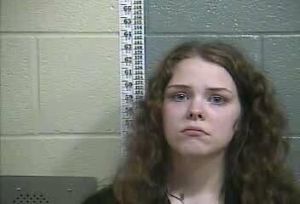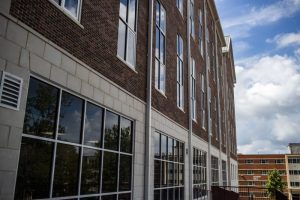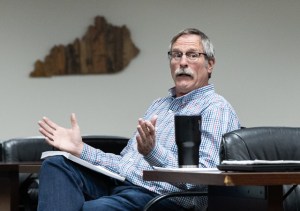Bypass traffic fix wanted
Published 12:00 am Wednesday, February 15, 2006
Traffic already causes headaches at the awkward near-intersection of U.S. 31-W By-Pass, Chestnut Street, University Boulevard and Loving Way, and it’s only expected to get worse.
So state road planners want to study how those roads can be rebuilt or otherwise controlled, and are casting around for ideas on how to fix those problems within a few years.
Trending
U.S. 31-W, whether called the bypass north of University Boulevard or Nashville Road to the south, is a state road – as is University Boulevard – so the Kentucky Transportation Cabinet is responsible for any changes to the roadway there.
Last fall the transportation cabinet talked briefly with city Public Works about its intentions to study traffic flow at the intersection, Assistant City Engineer Melissa Cansler said.
“That is the last conversation that the city has had with the state regarding that,” she said.
It’s long been identified as a problem area, but thus far only a standard effort to weed out obviously unworkable solutions has been mentioned to the city, Cansler said.
The worst problem at the intersection is probably the difficult left turn off Chestnut onto the bypass, according to Greg Meredith, chief district engineer for the transportation cabinet’s District 3 office in Bowling Green.
While opposing the rezoning of a small tract of land at the corner of the bypass and Loving Way on Feb. 7, attorney Charles English Sr. showed Bowling Green city commissioners a state-sponsored sketch of a traffic circle at Chestnut’s intersection with the bypass and another at the crossing of University Boulevard and Loving Way.
Trending
The City-County Planning Commission has talked with the transportation cabinet about the need for turning lanes and deceleration lanes around those corners, planning commission Executive Director Andy Gillies said. But so far, specifics have been limited to the state saying that proposed access points for the adjacent rezoning would not seriously affect any road plans, he said.
The traffic-circle sketch is just a preliminary idea, isn’t to scale, and doesn’t include the correct number of lanes, Meredith said.
Kentucky road builders haven’t had much experience with traffic circles, but they’ve worked elsewhere, he said.
“It’s kind of a tight squeeze to fit those in, but it’s definitely something we’re looking at,” Meredith said.
Another possibility is a coordinated signal system at the adjacent intersections, he said.
The cabinet is trying to get the General Assembly to fund a traffic study in this year’s budget, Meredith said.
But that puts any construction several years off, with the need to acquire rights of way and move utilities before that, he said. The final project is estimated to cost $2 million to $2.5 million, if something like the traffic circle design is decided upon, Meredith said.
The cabinet would like to formally add work on those intersections to the state six-year road plan, but even that is full of needed projects for which there is no funding, he said.
If designed and funded, this project would be part of a larger, ongoing expansion of Nashville Road, Meredith said. Next year plans call for widening Nashville Road between Campbell Lane and the Natcher Parkway, and widening it between University Boulevard and Emmett Avenue is also on the drawing board, he said.
The idea of traffic circles isn’t the first proposal for how to deal with the congested intersection. The 20-year master plan for Western Kentucky University, displayed in 2003, included a possible realignment of the bypass, University Boulevard, Chestnut Street and Loving Way, with Nashville Road running into a straightened Chestnut Street and University Boulevard curving around into the bypass.
“I think that was an acknowledgment by the university that there was, in fact, a problem there,” said John Osborne, campus services and facilities associate vice president at Western.
The plan was not an example of what the university actually thought would be done with the intersection, but reflected the need to show that there would likely be changes there within 20 years, he said.
Western owns property on both sides of the end of University Boulevard.
Since traffic flow there will affect Western, the university expects to be involved in any final plans for the site, Osborne said.
Discussion of traffic problems there has increased lately, but Western has had no talks with the state about any need for right-of-way changes, he said.







